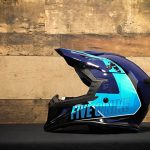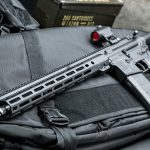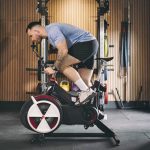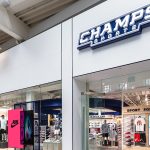In its inaugural incarnation, SGMA found its Spring Market to be a trade show that for the most part fulfilled attendee expectations for the present and filled hopes for the future. As a first show of a new concept it was seen by most as better than the last show of the old format, a clear signal that SGMA may have at last shed the cloud of the old Super Show and the market may just give them a chance to make good on their mission to create the central gathering point for the sporting goods industry. There is undoubtedly hard work ahead to convince those that did not attend to take the plunge next year, but it should be an easier task now that the first show is completed.
It wasnt all roses. The team sports and other hardgoods brands clearly had a better showing than others, due in large part to the fact that there was a fairly critical mass of the important companies in attendance on that end of the business. The gap was in softgoods, where brands like Asics, Russell, New Balance, Mizuno, Under Armour, and InSport made solid commitments to the show, but unfortunately, were not joined by many others. This was due in large part to a “wait n see” attitude, but also due in large part to an underlying impression that the show was focused solely on team sports.
The opportunity wasnt lost on a few non-exhibiting brands that were seen at the show kicking the tires. “This is much better than I thought it was going to be,” said one senior exec from a leading apparel company. “We will have to be here next year. There isnt anywhere else to showcase our total brand.” That sentiment was felt by some that did exhibit, but were disappointed by the attendance. “I just dont get it,” said a senior sales VP from one of the footwear brands. “This is the perfect opportunity for retailers to see footwear and apparel in one place.”
SGMA clearly found itself in a chicken n egg scenario with this first effort, but should have some solid support from which to build. Get more vendors involved and more retailers will show up. More retail commitment begets more exhibitors. The timing, for the most part, was right on, although some would like to see it a few weeks earlier. As for location, people are just plain tired of the Las Vegas experience and it may be time to move on.
More than one attendee that spoke with Sports Executive Weekly suggested a show in a more central location May/June could be widely embraced. More retailers could drive in and the experience is more balanced and would most likely result in more families or spouses making the trip. But SGMA is committed to Vegas for two years so the show will stay put for now.
The mix of the floor exhibits and presentations worked well this time around, due in large part to the position of the conference presentations on the show floor. Many of the sessions were SRO and provided clear value for the participants and the audience. TAGs involvement was no doubt key to the success of the team side of the show and The Athletes Foots global franchise meetings added additional energy. Some brands took the opportunity to have national sales meetings prior to the show as well.
But in the end, its about customers – both current and potential – showing up, isnt it? Mitch Modell played retail ambassador and was seen everywhere on the show floor, working with his team on product and shaking hands in the aisles. Doug Morton and David Campisi and their team made a solid showing on Day One and threw their support behind SGMAs efforts. Teams from Hibbett, Wal-Mart and Target made their presence known as well. But the show lacked broader retailer attendance and that will take a solid effort on the industrys part – SGMA, vendors and the media – to build interest for next year. This is an initiative the sporting goods industry must get behind. There is no need for vendors to wait until August to show footwear or apparel. They can do it well within their selling windows and at a venue that will undoubtedly have more momentum as it goes into next year.
On the team side of the show baseball and softball drew the most attention from vendors, though field sports like lacrosse and field hockey, and even soccer also took up a decent amount of floor space.
Easton used the show to offer an expanded Stealth Comp bat line that grew from last years introductory piece to include different flexes, weights and lengths. The vendor also had its Mojo Athcleat on display, with which it hopes to enter the world of higher priced cleated footwear. Matt Arndt, senior vice president of baseball/softball, said the introduction was “one of the better feedbacks weve ever had” noting interest from professional ballplayers before the product has had a chance to get onto many feet.
Miken, a part of K2s team division, launched a new full composite bat that is the companys highest performing bat to date with a graphics package that should jump off the shelf.
Mizuno showed off a revamped cleat line, with logo coloring moving to white from silver in past years. In addition, the company reported success with its pant line, noting a trend away from pinstripes towards piping down in the outer leg. Additionally, Mizuno made a solid commitment on the running side of the business, and brought along its foot analysis machines that help consumers find the perfect fit.
Under Armour continued its push into cleated footwear at the show, showing off updates and expanded colors for its baseball/softball cleat lines.
New to the show was Verdero: Controlling the Game, with a fashionable-looking line of baseball cleats. Verdero was recently acquired by Controlling the Game from Fila, adding the companys line of footwear and baseball gloves to CTGs existing wood bat and fielding glove offerings.
On the basketball end of team sports, Spalding is seeing the fruits of four years working under the same management team (despite a couple of acquisitions during the period), according to Dan Touhey, VP of marketing, as the company continues to expand its popular NeverFlat line to now encompass basketball, soccer, volleyball and shortly football.
In addition, Spalding is looking for ways to inject fun back into sporting goods hardgoods. As Touhey tells it, the brand unveiled its new MP3 Player Portable Backboard, along with the rest of its line, to a potential customer at the training facility for the Milwaukee Bucks, only to have the players storm the new product, making it difficult to show off to the customer, though in the best way possible.
ASICS was playing in both the team and specialty running markets at the show with an expanded compression apparel line for team that includes additional colorways and silhouettes. Volleyball, Track and Field and Wrestling form the backbone of Asics team program, but the company has introduced its Field Sports line, which has experienced popularity for several years in Europe. Bridging the team/run gap, the companys track and field product will launch with a Beijing color program for all Asics sponsored athletes to wear during the Olympic games. In specialty running, the companys flagship shoe for the U.S. will be the Kayano 14 that will take cues from the previous Kinsei, but will feature more visible use of the companys GEL technology.
An interesting piece on the Asics shoe wall was the GEL-Artic, which came after a series of customer requests for a trail runner than can run on, well, Arctic trails. The shoe features track spikes on the bottom for traction as well as other adaptations to accommodate long runs on the frozen tundra.
The sports medicine companies all seemed to take their own approach to the market as each unveiled new products, but with little overlap over what the competition was up to.
Mueller began selling to retail the No Glare flip-up sunglasses it had on hand at the NSGA Management conference, while also launching a new retail display for its Quencher gum.
Cramer Sports Medicine turned its focus to education about MRSA, an antibiotic form of Staph infection that has begun to gain notice in high school athletics due to its tendency to easily spread through cuts, scrapes and skin-to-skin contact. To that end, Cramer launched its Sports Hygiene Starter Pack that contains several key products needed to fight against MRSA as well as other common infectious diseases.
McDavid continues to expand the use of its HexPad technology, now offering the padding in a widened selection of slider shorts as well as in chest protection applications. The chest protection actually has two facets, as the company has begun offering a HexPad sports bra for female athletes as well as HexPad sternum shirts for kids playing baseball.
XO Athletic also looked towards youth baseball and softball with its products, launching the ProShield, which offers sternum protection against batted balls through a triangular-shaped rubber heart-guard that disperses impact forces away from the center of the chest.
And last but not least, Shock Doctor unveiled a Pee Wee cup for kids team sports, but focused the majority of its attention on the companys bag line. In development for the past couple of years, the line first shipped in the form of a hockey bag in July last year and has since expanded to include numerous team sports and has also found a home in the motorsports crowd.















